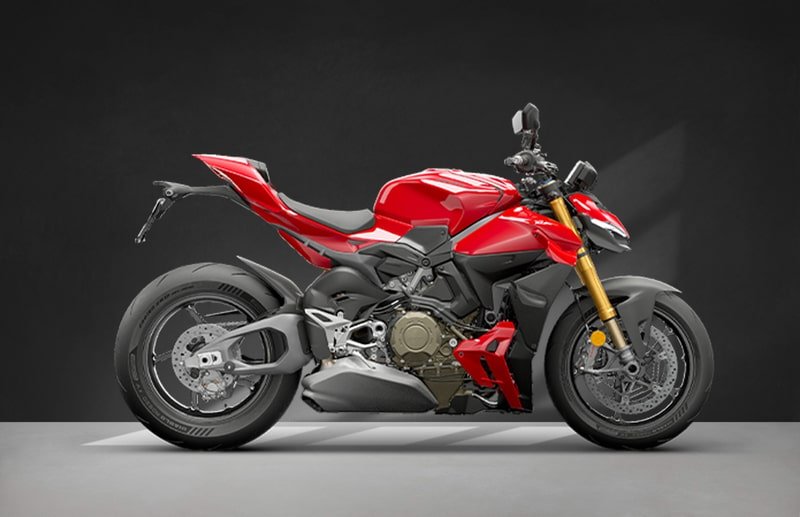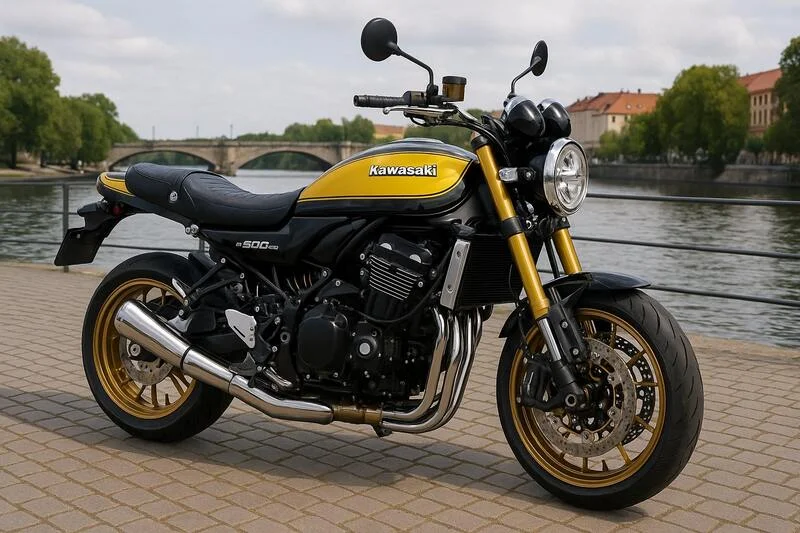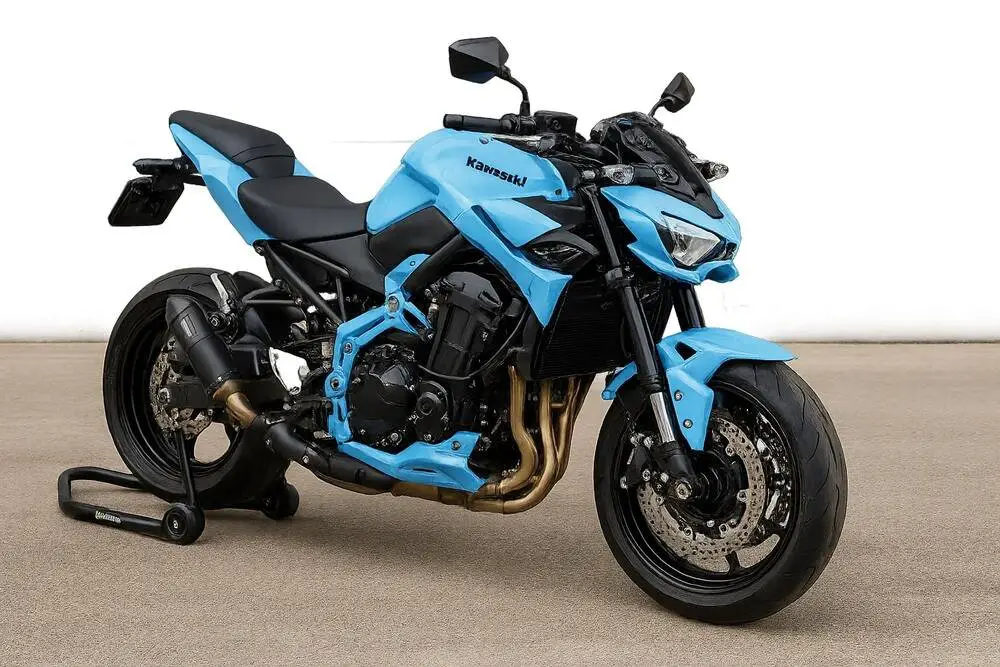Ducati Panigale V4: Ultimate Review & Buying Guide (2025 Update)
Introduction to the Ducati Panigale V4
The Ducati Panigale V4 isn't just a motorcycle—it's a testament to Italian engineering and performance art. Introduced in 2018, this model marked a major shift in Ducati’s lineup by swapping the traditional L-twin engine for a four-cylinder configuration. The result? A cutting-edge machine that dominates both the racetrack and the streets.
This beast borrows technology directly from Ducati’s MotoGP program, creating a perfect harmony of speed, control, and aesthetics. Whether you're a seasoned track rider or a motorcycle aficionado, the Panigale V4 will ignite your senses.
Design and Aesthetics
Aerodynamic Innovation
Ducati spared no detail in optimizing the V4’s aerodynamics. The latest versions feature winglets integrated into the fairings, improving downforce at high speeds. This isn't just for looks—it enhances stability and reduces front wheel lift.
Signature Ducati Styling Elements
From its sharp front end to the sleek tail, the Panigale V4 is a visual powerhouse. The iconic red paint, LED headlamps, single-sided swingarm, and high-mounted exhaust make it instantly recognizable on any road.
Engine and Performance
Desmosedici Stradale V4 Engine Breakdown
At the heart of the Panigale V4 lies the 1,103cc Desmosedici Stradale V4 engine, producing a jaw-dropping 215+ horsepower. Inspired directly by Ducati's MotoGP engines, it's a 90° V4 with a counter-rotating crankshaft and twin-pulse firing order.
Power Output and RPM Range
Peak power comes at 13,000 RPM, but this engine is surprisingly tractable at low revs too, making it versatile for street use. The torque band is broad and usable, delivering consistent power delivery whether you're exiting corners or cruising.
Riding Experience
On-Road vs. Track Performance
The Panigale V4 is blisteringly fast on the track, offering race-spec precision and agility. On the road, the ride remains firm but manageable, thanks to advanced electronics that adapt the bike to varying conditions.
Ergonomics and Rider Feedback
Ducati has improved rider ergonomics with each iteration, and 2025’s model is no exception. The seat is more padded, footpegs are repositioned for comfort, and the handlebar angle is better suited for longer rides without compromising control.
Chassis and Suspension
Aluminum Front Frame Advantages
The V4 uses a lightweight aluminum front frame that contributes to sharper handling. This design offers more flex and better feedback than traditional trellis frames, enhancing the rider’s connection to the bike.
Öhlins Electronic Suspension Explained
In the V4 S and SP2 models, the Öhlins Smart EC 2.0 system provides semi-active suspension with real-time damping adjustments. This ensures optimal ride quality and control regardless of surface or rider input.
Braking System and Tires
Brembo Stylema Brakes
Stopping power is provided by Brembo Stylema calipers paired with 330mm discs. These brakes deliver sharp, confidence-inspiring deceleration with minimal fade—even under track abuse.
Pirelli Diablo Supercorsa SP Tires
Factory-fitted with Pirelli Diablo Supercorsa SP V3 tires, the Panigale V4 gets maximum grip and responsiveness on dry surfaces. They’re great for spirited road riding and full-throttle track days.
Electronic Rider Aids
Traction Control, Slide Control, and Wheelie Control
The Panigale V4 features a suite of electronic aids: Ducati Traction Control EVO 2, Wheelie Control, Slide Control, and Engine Brake Control. These systems provide safety and performance without being intrusive.
Ride Modes and GPS Telemetry
With selectable ride modes—Race, Sport, Street—the bike adapts to your riding environment. Advanced telemetry options (especially in SP2) let you analyze lap times, lean angles, and acceleration in detail.
Comparison with Other Superbikes
Vs. Yamaha R1M
While the Yamaha R1M offers comparable performance, the Panigale V4 stands out in terms of refinement and electronics. Ducati’s MotoGP DNA gives it a more visceral riding experience.
Vs. BMW S1000RR
The BMW S1000RR is more user-friendly for daily use, but the Panigale V4 delivers unmatched character and aggression. It’s the purist’s choice.
Vs. Aprilia RSV4
The RSV4 is a close contender, especially in handling, but Ducati’s build quality and engine performance edge it out slightly.
Ducati Panigale V4 Models Explained
Standard V4
Offers core features at a more accessible price point, perfect for enthusiasts stepping into the superbike world.
V4 S
Includes Öhlins electronic suspension, lightweight wheels, and other performance upgrades.
V4 SP2
Track-focused with carbon wheels, dry clutch, and exclusive livery. Ideal for serious racers.
V4 R
The most extreme version—998cc to meet WSBK rules—with a redline north of 16,500 RPM and over 235 HP with a race exhaust.
Pricing and Value for Money
| Model | Starting Price (USD) |
|---|---|
| Panigale V4 | $23,995 |
| Panigale V4 S | $30,595 |
| Panigale V4 SP2 | $37,995 |
| Panigale V4 R | $45,995+ |
The Panigale V4 is priced at the premium end, but the combination of power, tech, and brand prestige makes it a solid investment for thrill-seekers.
Ownership Costs and Maintenance
Service Intervals and Cost Breakdown
-
Oil changes every 7,500 miles
-
Valve checks every 15,000 miles
-
Annual maintenance can range from $600–$1,200 depending on usage
Warranty and Insurance
Comes with a 2-year unlimited mileage warranty, and insurance varies widely depending on age, location, and coverage—but expect higher premiums due to its performance nature.
User Reviews and Community Feedback
Rider Testimonials
Owners praise the Panigale V4 for its unmatched excitement, stating it's “as close to riding a MotoGP bike as it gets.” Some note the heat from the engine in traffic, but agree it's a worthy tradeoff.
Forum Consensus and Reliability Insights
On platforms like Ducati.ms and Reddit, users report great reliability with proper maintenance. Most agree it's not beginner-friendly but incredibly rewarding for experienced riders.
Racing Heritage and Track Records
Ducati’s rich history in MotoGP and WSBK directly influences the V4. Many of its components, like the reverse-rotating crankshaft and electronics, are derived from racing prototypes.
Ducati Customization and Accessories
From Termignoni exhausts to carbon fiber winglets and custom seats, Ducati offers a wide array of accessories. You can personalize your Panigale for both performance and aesthetics.
Pros and Cons of the Ducati Panigale V4
Strengths at a Glance
-
Thrilling performance
-
Stunning design
-
Top-tier electronics
-
Track-ready out of the box
Potential Dealbreakers
-
High price point
-
Heat management in city rides
-
Not ideal for beginners
FAQs about the Ducati Panigale V4
Q1: Is the Ducati Panigale V4 street legal?
Yes, all models are street legal, though the V4 R is track-oriented.
Q2: How fast is the Ducati Panigale V4?
It can exceed 190 mph in unrestricted form.
Q3: What makes the V4 engine unique?
Its MotoGP-derived layout and counter-rotating crankshaft offer race-level dynamics.
Q4: Can a beginner ride the Panigale V4?
Not recommended. Its power and sensitivity require experience.
Q5: Is the Ducati Panigale V4 comfortable for long rides?
While not a touring bike, newer models offer improved ergonomics.
Q6: What’s the best model for track use?
The V4 SP2 or V4 R are best suited for track enthusiasts.
Conclusion: Is the Ducati Panigale V4 Worth It?
If you're seeking raw performance, world-class engineering, and iconic style, the Ducati Panigale V4 is worth every penny. It's not just a motorcycle—it's a full-throttle experience crafted for those who crave excellence on two wheels.




